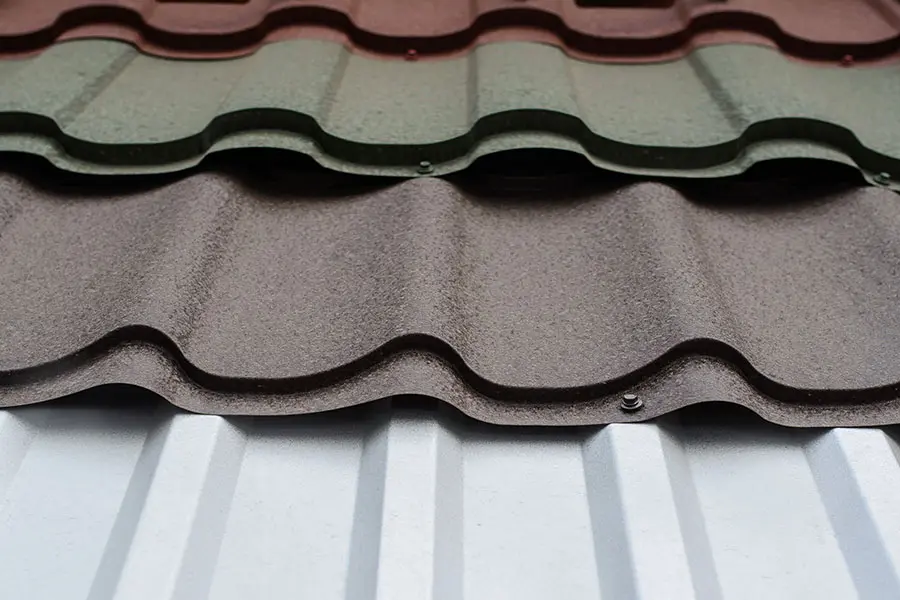Client Reviews on the Best Gainesville FL Roofing Companies Available
Wiki Article
Ideal Practices for Ensuring Proper Roof Covering Ventilation
A well balanced intake and exhaust vent proportion, commonly 1:300, plays an essential duty, with intake vents ideally put at the reduced edge of the roofing for cool air entrance and exhaust vents at the peak for warm air leave. Maintaining insulation away from vents is important to protect against airflow limitation.Understand Air Flow Basics
Appropriately understanding ventilation basics is essential for making sure the long life and efficiency of roofing systems. Reliable ventilation mitigates moisture buildup and temperature level extremes in the attic, both of which can result in considerable architectural damage with time. A well-ventilated roofing system aids in stopping typical concerns such as mold and mildew development, wood rot, and ice dams, which can jeopardize the integrity of the roofing products and the underlying structures.The main objective of air flow is to help with the activity of air, permitting a consistent exchange in between the outdoor and indoor settings. This equilibrium is accomplished with a mix of consumption and exhaust vents that interact to keep ideal airflow. Intake vents, commonly located along the soffits or eaves, allow fresh air to go into the attic room space, while exhaust vents, often situated at or near the roof ridge, make it possible for warm, humid air to leave.
Secret variables affecting the effectiveness of roofing system ventilation include proper placement, ample sizing, and making sure that both consumption and exhaust vents are unhampered. Regular assessment and upkeep are crucial to identify potential blockages, damage, or ineffectiveness in the air flow system, thus protecting the roofing's efficiency and sturdiness.
Kinds of Roofing Vents
Roof covering vents play an important role in maintaining efficient attic room air flow and, by expansion, the total health of the roof covering system. Numerous kinds of roof covering vents are offered, each with special advantages tailored to certain roof covering requirements.
Soffit vents are installed under the eaves and operate in tandem with roof covering vents to guarantee a balanced consumption and exhaust system. By allowing cooler air to get in from below, soffit vents help with the expulsion of warm air with upper vents. Gable vents, situated on the outside walls of the attic room, deal one more effective remedy, specifically in homes with saddleback roofs.
Examine Your Present Ventilation

Next, take into consideration the age and problem of your roof covering materials and air flow elements. Older systems might not adhere to existing structure codes or might have worn away gradually, reducing their performance. Conduct a detailed evaluation to identify any indications of damage, such as rust, damages, or spaces that can compromise the system's efficiency.
In addition, measure the attic temperature level and moisture degrees. High temperatures and moisture can suggest poor ventilation.
Installation Best Practices
Reliable installation of roof air flow systems is vital for making certain optimum efficiency and longevity. Appropriate setup starts with recognizing the certain air flow requirements of the roofing and the structure it covers. This entails determining the appropriate ratio of intake to wear down vents, normally adhering to the 1:300 policy, which specifies one square Continue foot of air flow for each 300 square feet of attic flooring room.
The positioning of vents is just as important. Intake vents should be installed at the roof covering's lower side, frequently in the soffits, to permit amazing air to go into. Exhaust vents, on the other hand, need to be set up near or at the roofing's optimal to help with the leave of warm, wet air. This develops a natural air flow that aids maintain temperature level and moisture balance within the attic room room.
Seal all air vent connections diligently site to stop air leaks and possible water seepage. Use top quality materials and follow maker standards to make certain sturdiness and efficiency. In addition, incorporating ridge vents with baffles can substantially boost air movement efficiency by stopping wind-driven rain and snow from going into the attic.
Ultimately, precise installation of roofing ventilation systems mitigates prospective concerns such as mold and mildew development, ice dams, and architectural damage, ensuring the roofing system's stability and the building's overall health.
Regular Upkeep Tips
Uniformity in upkeep methods is essential to ensuring the long-term performance of roof covering ventilation systems. Regular examinations are crucial, ideally done biannually-- in the spring and fall. Throughout these assessments, make certain that vents are without particles, nests, and other obstructions that might hinder airflow. Look for any type of indicators of wetness accumulation or mold, as these can show incorrect ventilation or leakages (roofing companies gainesville florida).
Cleaning the vents is an additional vital job. Use a soft brush or a vacuum cleaner to remove dirt and particles from intake and exhaust vents. Beware not to damage the vent screens or louvers throughout the process. Furthermore, examine the attic room space for any kind of indications of water damage, which can compromise the honesty of go to website the roof.
Correct insulation is equally essential. Make certain that attic room insulation does not obstruct the vents, as this can significantly restrict airflow. If any type of insulation has actually shifted or settled, reposition or change it to keep an effective obstacle.
Lastly, replace any harmed or missing elements without delay. Broken vents, cracked shingles, or scrubby blinking can all add to insufficient air flow and needs to be attended to without hold-up. Regular maintenance ensures that the roofing air flow system operates ideally, thereby extending the lifespan of the roofing system itself.
Final Thought
Making sure appropriate roofing ventilation is extremely important for keeping the performance and longevity of a roof covering system. Adherence to the 1:300 consumption and exhaust vent ratio, paired with the calculated placement of vents, is important. Regular semiannual assessments, debris cleansing, and making sure insulation does not obstruct air movement are important methods. Implementing these ideal methods will cultivate a well-ventilated roof system, thereby minimizing prospective issues connected to moisture buildup and excessive warmth, eventually lengthening the roofing's lifespan.A balanced intake and exhaust air vent ratio, frequently 1:300, plays a pivotal function, with consumption vents ideally put at the reduced edge of the roofing system for trendy air entry and exhaust vents at the height for cozy air leave. Intake vents, normally situated along the soffits or eaves, permit fresh air to enter the attic room area, while exhaust vents, typically positioned at or near the roofing system ridge, make it possible for warm, moist air to escape.
Soffit vents are installed under the eaves and work in tandem with roof covering vents to make sure a well balanced consumption and exhaust system. By allowing cooler air to get in from below, soffit vents assist in the expulsion of warm air via top vents. Adherence to the 1:300 consumption and exhaust vent ratio, combined with the critical positioning of vents, is essential.
Report this wiki page